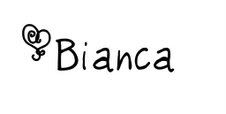 The February mini-challenge for The GLBT Challenge is to read a GLBT book, short story, poem(s), or essay by or about a person of color.
The February mini-challenge for The GLBT Challenge is to read a GLBT book, short story, poem(s), or essay by or about a person of color. "The Harlem RenaissanceAlthough African-American lesbian literature could be said to have its beginnings in the lesbian, gay, and bisexual culture that flourished during the Harlem Renaissance of the 1920s and early 1930s, black lesbians' self-naming process occurred only in an ambivalent, highly coded fashion. The increased sexual freedom and openness that made it possible for black gay and bisexual male writers like Richard Bruce Nugent, Wallace Thurman, and Claude McKay to produce gay-identified texts had a less obvious impact on women.
Although a number of lesbian and bisexual blues singers--including Bessie Smith, Ma Rainey, Josephine Baker, and Ethel Waters--attained a level of sexual openness in their music, these women generally hid their same-sex relationships behind a public guise of heterosexuality. Only rarely did their lyrics even allude to their sexual desire for other women, and generally all such allusions were tinged with an ambivalence suggesting an elusive sexuality. In "Prove It on Me Blues," for instance, Ma Rainey simultaneously celebrates and denies her sexual preference by daring her listeners to "prove it" on her.
This ambivalence is even more pronounced in texts by middle-class Harlem Renaissance lesbian and bisexual women writers. In addition to the sexism that made it difficult for early twentieth-century women of any color to adopt openly lesbian lifestyles and identities, the highly sexualized images of black women that developed during slavery to justify the institutionalized rape of enslaved women made it even less likely that African-American bisexual and lesbian writers would risk inadvertently confirming these stereotypes by depicting their sexuality in print.
The writings of Alice Dunbar-Nelson, Angelina Weld Grimké, and Nella Larsen illustrate the effects of this culturally imposed self-silencing. Although Gloria Hull has uncovered journal evidence indicating that Alice Dunbar-Nelson was romantically involved with both women and men and that Angelina Weld Grimké had at least one woman lover, these signs of bisexual and lesbian desire appear only in highly veiled form in Dunbar-Nelson's and Grimké's published works.
A similar type of sexual encoding can be found in Nella Larsen's Passing (1929). Ostensibly an exploration of racial passing, this novella can also be read as an account of the growing sexual attraction between its two protagonists, Irene Redfield and Clare Kendry. As Debra McDowell notes in her 1986 introduction to Passing, the title has more than one meaning: Just as Clare Kendry passes as white, Passingitself passes as heterosexual, hiding its homoerotic subtext beneath the more obvious racialized theme."



No comments:
Post a Comment